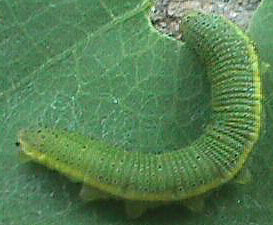|
Cassia Close-up of flower |
|
Cassia Close-up of flower |
 Host plant to many species of sulphur caterpillars, to include the orange-barred
sulphur. Can be grown as a cultivated shrub or small tree to 25 feet tall.
It's evergreen, with compound leaves that are up to 3 feet long and have 20
leaflets. Blooms erect spikes of waxy, golden flowers, which bears all year in south
Florida, but in late summer/fall for me, in North Florida.
Host plant to many species of sulphur caterpillars, to include the orange-barred
sulphur. Can be grown as a cultivated shrub or small tree to 25 feet tall.
It's evergreen, with compound leaves that are up to 3 feet long and have 20
leaflets. Blooms erect spikes of waxy, golden flowers, which bears all year in south
Florida, but in late summer/fall for me, in North Florida.
Culture
Light: Full sun/light shade
Propagation: Seeds, matures quickly and is easy to grow. Will flower the first year. Chip seed and soak 24 hours in tepid water. Sow 1/8th inch in well drained soil. Keep 70-75 degrees, germination occurs in 7-90 days.
Soil and Fertility: Moist soil of moderate fertility
Hardiness: Zone 10-11 Cold sensitive; can be grown as a house plant in winter.
Cassia are very easy plants to grow from seed. I grow mine in a container, so I can bring them inside for winter. I've seen trees about 25 feet high, but my container plants won't get that big. I've had several different kinds of sulphur cats on mine, but mostly the Orange-Barred Sulphur. Unfortunatly, this little tree also attracts ants and wasps, which attack and devour the eggs and the cats. The plant has special glands, called "extrafloral nectaries", near the base of the leaves, that produce sweet liquids attractive to ants. Definatly bring the cats inside to raise. Leaves must be changed out daily, to keep them fresh. The cats blend almost perfectly with the leaves. They lay on top of the leaf, in the center vein, you've really gotta look to find them. They are not big eaters, and seem to prefer the newest leaves.